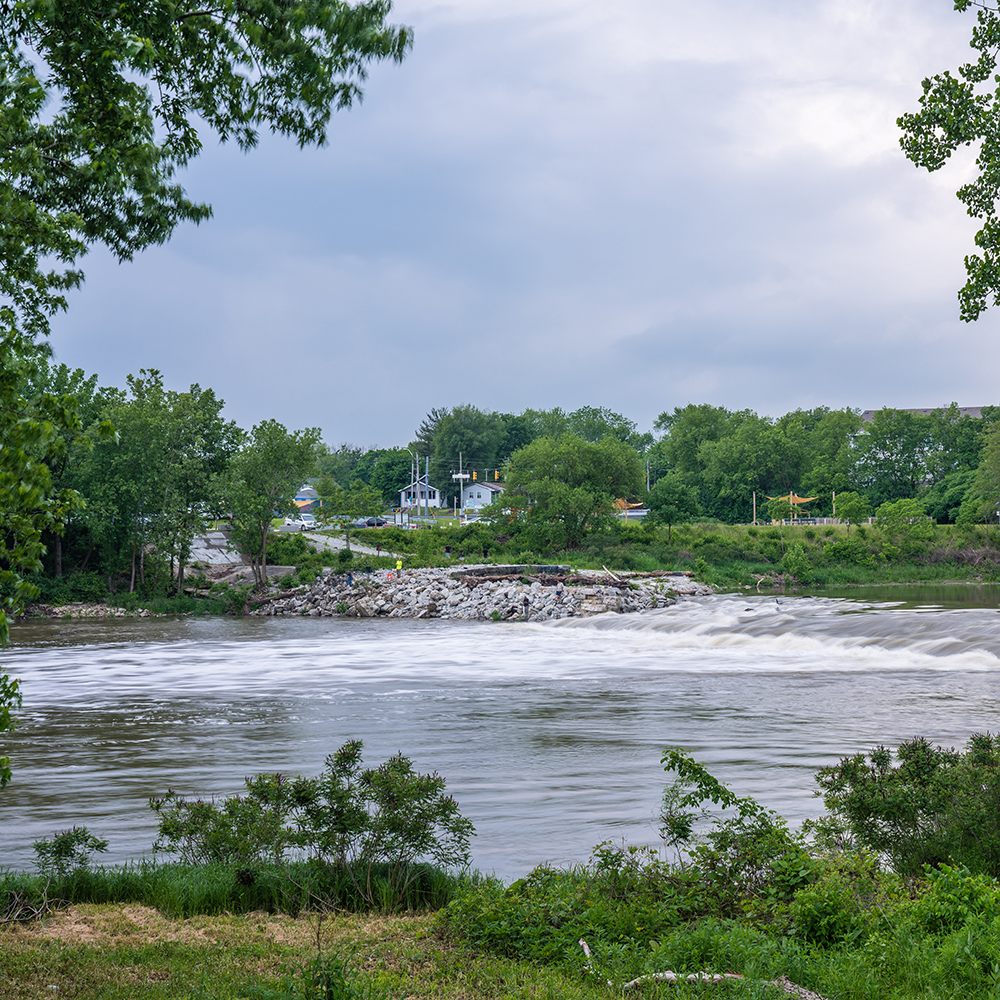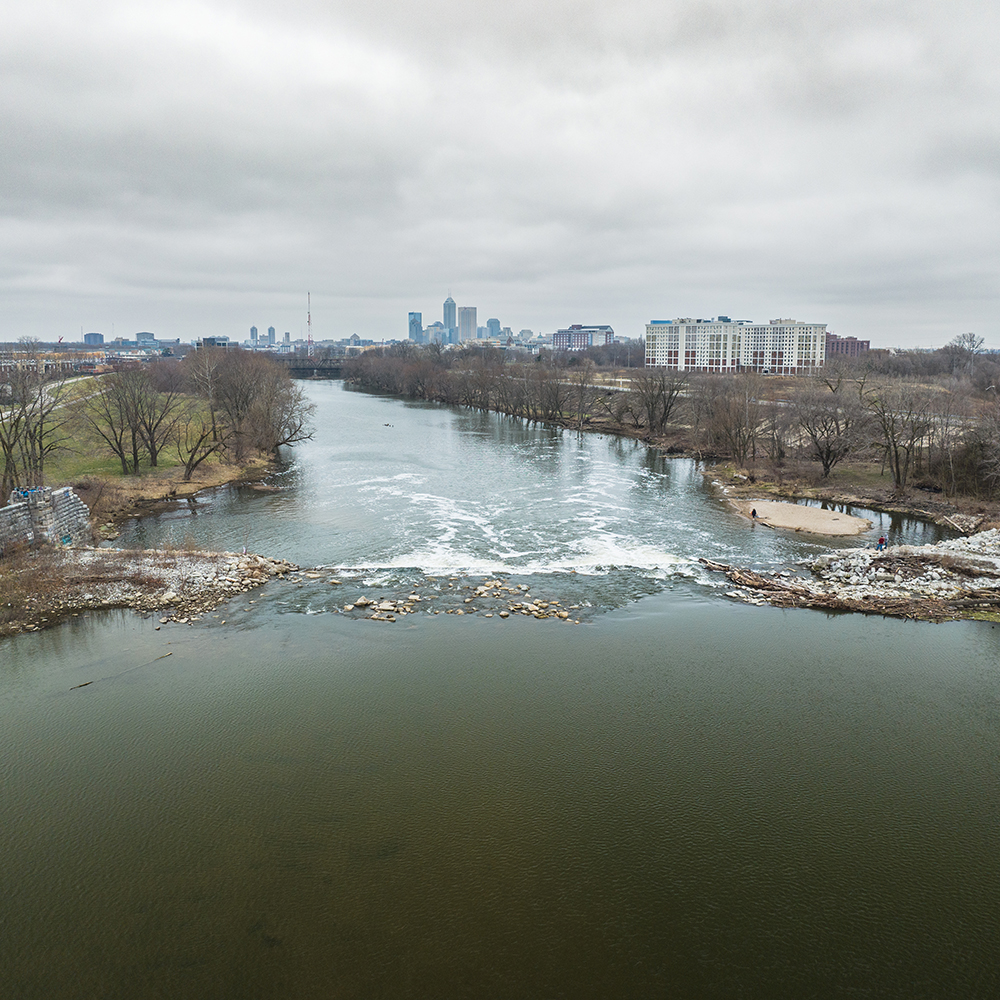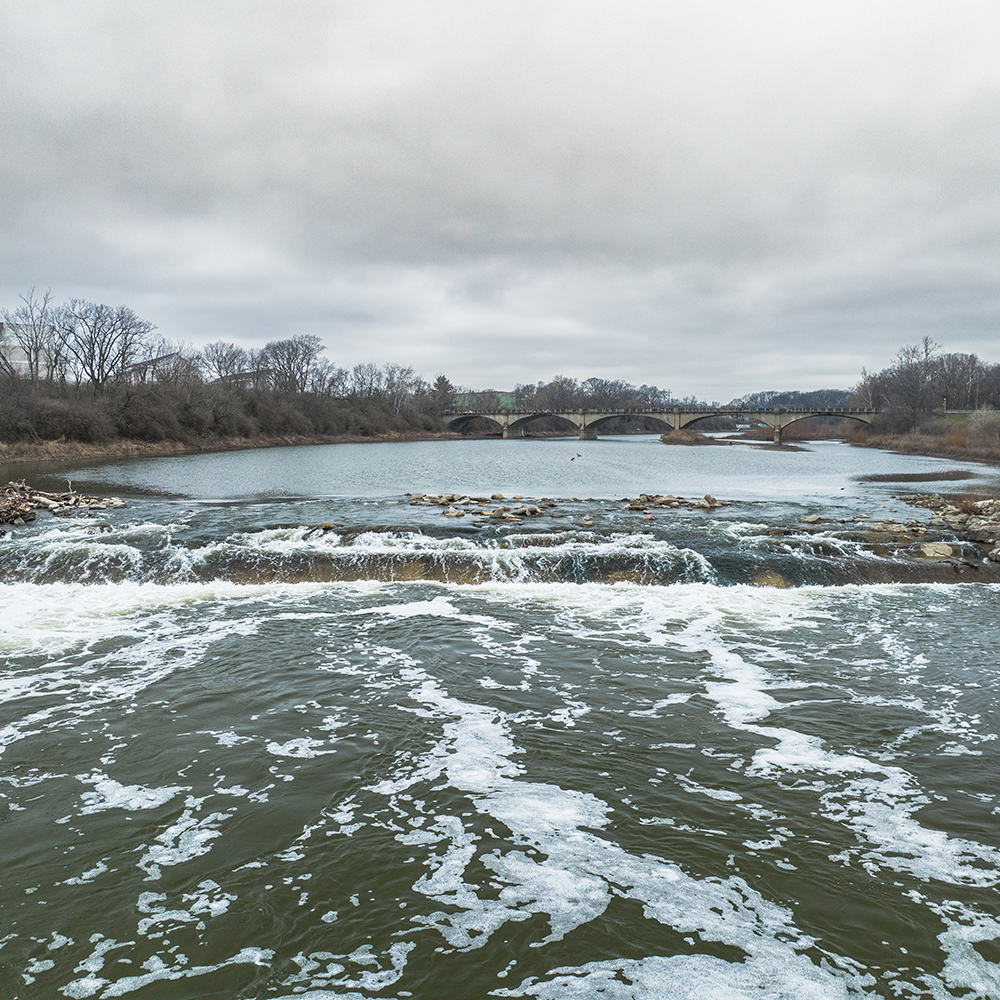At Friends of the White River (FOWR), the mission has always been clear: protect, preserve and promote the vitality of central Indiana’s most precious natural resource. As advocates for recreational paddlers, anglers, boaters and riverfront landowners, they have a vested interest in river safety and the ecological well-being of the White River.
This includes addressing the historical impact and current dangers of the Emrichsville low-head dam.

Emrichsville Dam was constructed in 1899 for aesthetic and recreational purposes, as part of the development of Riverside Park upstream. Until 2018 it also provided for emergency intake pumps for Indy’s municipal water supply. While serving these purposes, the low-head dam significantly fragmented the White River watershed’s natural ecosystem. Low-head dams prevent upstream fish migration, harming native species like smallmouth bass. The effect on the river’s water quality, pooled up behind the low-head dam, was largely negative, especially during Indiana’s hot summers.
Low-head dams are notorious for creating deadly recirculating currents just downstream of the structure, known among river safety experts as “drowning machines.” These currents pose significant risks to paddlers, boaters and anglers, tragically claiming lives over the years. The most recent fatalities occurred in April, resulting in the tragic loss of two paddlers. This has illuminated the urgency of removing the dam to other stakeholders and further bolstered our advocacy efforts.
In parallel with the Emrichsville Dam’s history, Belmont Beach emerged as an important cultural space for Indianapolis’s African American community. Located in the Haughville neighborhood, just south of the low-head dam, the beach served as a vibrant gathering place, despite its waters being heavily polluted due to industry waste. While this section of the river was used to reinforce racist segregation policies, black residents also used it for community bonding and cultural expression, all shaped by the altered landscapes the low-head dam produced.
Since its founding in 1985, FOWR has been deeply involved in various initiatives to protect and restore the White River. Efforts intensified following the death of a teenager at Emrichsville Dam in the spring of 2021. FOWR have demanded action to remove the low-head dam, installed upgraded warning signage, collaborated with low-head dam removal experts, and mobilized community support to advocate for the removal of this and other low-head dams within the White River’s watershed.

The recent approval of a $750,000 grant by the U.S. Fish and Wildlife Service, as part of the Bipartisan Infrastructure Law, marks a significant victory in FOWR’s three-year campaign. This funding, announced in April 2024, will facilitate the full removal of the Emrichsville Dam, aiming to restore unimpeded river flow, enhance fish migration, improve water quality and ensure safer recreational access.
This project not only represents an ecological restoration, but also a return to safer, more enjoyable river experiences for our community. Removing the low-head dam will increase the river’s accessibility for activities like paddling, fishing, and boating crucial for the physical and mental well-being of Marion County residents and visitors.
The removal of the Emrichsville Dam is just one of many steps needed to fully realize a restored White River. We invite you to join us, whether through volunteering, a sustaining membership or a one-time donation, to help continue these efforts. FOWR sponsorships and donations are mostly tax-deductible and offer a meaningful way to positively impact our river’s future.
For more information on how you can get involved or to make a donation, please visit our website at friendsofwhiteriver.org. Your support helps us continue vital programs that connect people to the river, advocating for a clean, healthy and accessible White River.





